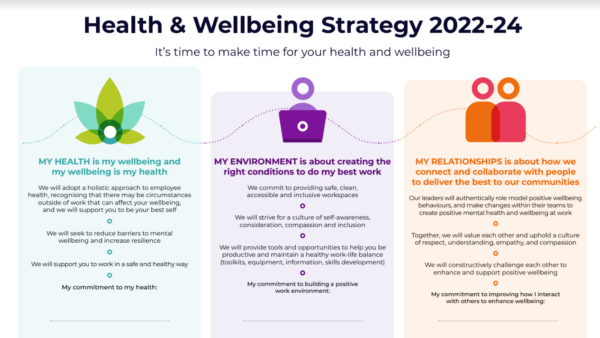Wellbeing policy making with Westminster City Council
In partnership with The Health Foundation, we delivered tailored support to local authorities to place wellbeing at the heart of policy making across different focus areas and local needs.
Nerissa Caesar, Wellbeing and Reward Specialist at Westminster City Council, reflects on her experience of the programme.
The experience of participating in What Works Centre for Wellbeing’s series of workshops was incredibly positive. It afforded me the opportunity to share knowledge with professionals outside my organisation, and gain a wider perspective.
I came to the workshops seeking support to update our existing staff wellbeing policy. When I first approached this task, I was very much dependent on what we already had in place. While it identified enablers, there was no action plan or key performance indicators in place, and had quite a narrow focus. This made it difficult to enact, monitor and report effectively. Being part of this cohort opened my eyes to other things we should be considering and were previously unaware of.
After attending the first workshop I found myself with a lot of useful information, but still felt I lacked direction. Without a clear starting point, the task seemed impossible, and this was compounded by internal time pressures and conflicting priorities at work.
The Centre’s Head of Implementation, Joanne, offered me additional support. We had a lengthy and considered discussion around the key drivers of workplace wellbeing: Health, Security, Environment, Relationships and Purpose. This was a big turning point as it provided the opportunity to look outside of the very closed perspective I’d been trying to proceed with.
I used these key drivers to frame my thinking and form the basis of the new staff wellbeing strategy, focusing on promoting good health at work, a safe working environment and positive working relationships.
Having identified the strategy’s three foundational pillars – or ‘wellbeing zones’ – I held two internal focus groups to gather input.
One group comprised Trade Union representatives and Staff Network Chairs, the other comprised our Wellbeing Pioneers and Mental Health First Aiders. We asked the focus group participants the following:
- What immediately springs to mind when you look at these three pillars?
- What would you say the priorities are for you, under these three pillars?
- What (if anything) are the blockers/obstacles to you experiencing what good looks like under these three pillars?
At this point, I once again felt a bit overwhelmed by the amount of information and was unsure of where to begin. Seeking Joanne’s guidance, and working through my concerns and challenges at another cohort workshop, I realised I wasn’t as far away from the finish line as I’d thought.
Being part of the cohort has been absolutely instrumental in progressing and updating our thinking. Not only did the workshops provide a copious amount of information and insight, they were a chance to collaborate with other Local Authorities from across the country who were looking at wellbeing policy. It was a safe space to discuss challenges, obstacles, worries and frustrations faced along the way with others.
Through this process, we were able to launch a new Health and Wellbeing Strategy for staff in April this year [figure 1].
The strategy is designed to support people when they are unwell and unable to work, and also embraces prevention through supporting good-quality jobs that enable our staff to thrive.

Figure 1. Westminster Council Wellbeing Strategy 2022-24
The principles include:
- adopting a holistic approach to employee health, moving beyond with leaders authentically modelling positive behaviours;
- increasing resilience and reducing barriers to mental health through providing tools and opportunities to help productivity and work-life balance;
- providing safe, clean, accessible and inclusive workspaces;
- striving for a culture of self-awareness, consideration, compassion, respect, empathy and inclusion.
In the lead up to launching the strategy, it was shared with focus group participants, People Services, the executive leadership team members and their direct reports. There was wholesale agreement that it successfully captures what the organisation wants to achieve in this area.
The strategy was then presented at the all-staff weekly address at the end of March, where it was well received. We are now working through the detailed action plan which will help us embed this within the organisation in the next two years.
This is something which is very much needed for our staff, especially in light of what everyone has been through the past couple of years. We know if we get this right, it will make such a difference.
